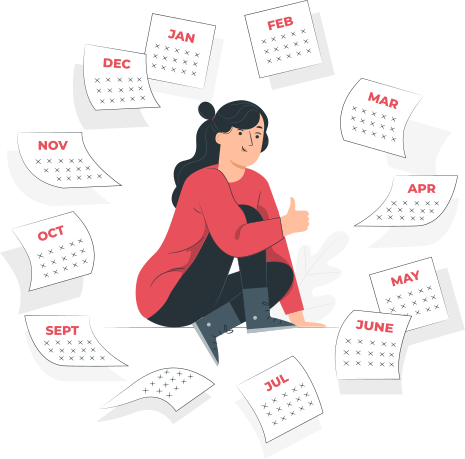As educators, one of our primary objectives is to create an engaging and effective learning environment for our students. However, not every student learns the same way, and it can often be a challenge to cater to each individual’s preferred learning style.
One way to improve the learning power of a broad range of students is to incorporate visual aids and techniques into your teaching practices. In this post, we will explore the art of teaching visually and provide practical tips for training your students to be future-ready individuals through visual teaching.
Understanding Visual Learning Styles
Before we dive into specific visual teaching techniques, it’s important to understand the different learning styles that exist, particularly with regards to visual learners.
Visual learners process information best through images, graphs, and other visual representations. They tend to have strong spatial awareness and an acute sense of observation. They may also prefer to have instructions or ideas presented to them in a visual format, rather than through verbal explanations.
By identifying visual learners in your classroom, you can tailor your teaching methods to suit their needs and improve their learning outcomes. Some strategies for identifying visual learners include:
- observe students and take note of their behaviour during class
- ask students about their preferred learning styles
- administer visual learning style assessments
Incorporating Visual Aids in Teaching
Now that you understand the benefits of visual teaching and learning and how to identify visual learners in your classroom, let’s explore some practical ways to incorporate visual aids into your teaching:
Whiteboards and Chalkboards
Chalkboards and whiteboards are some of the most basic and practical visual teacher resources. They allow you to illustrate ideas, concepts or problems in real-time in a way that students can easily see and understand. You can also use different color markers or chalk to create a visual hierarchy and highlight key points.
Graphics and Images
Graphics and images are incredibly effective tools for teaching. They allow you to present complex ideas concisely and make information more engaging and interesting to students. Graphics and images can take many forms, including photographs, charts, and diagrams.
Videos and Animation
Video and animation are incredibly successful visual aids for teaching. They are particularly helpful for showing complex processes or explaining abstract concepts, as they allow students to see the information in action. You can create your own videos or animations using tools such as Powtoon, Animaker, or Canva.
“Teaching visually is not just about pretty pictures, it’s about connecting with your audience and enhancing their learning experience.”
Creating Effective Visual Presentations
Creating effective visual presentations is essential to ensure that students are engaged and retaining the information being presented. Here are some tips for creating engaging and informative visual presentations for the different learners in your class:
Keep It Simple
The key to creating effective visual presentations is to keep them simple and focused. Use minimal text and focus on the most important information you want students to take away from the presentation.
Use High-Quality Visuals
Choose high-quality visuals such as images or graphics that are clear and easy to understand. Avoid using low-quality images or graphics as they can be distracting and make it harder for students to understand the information being presented.
Use Fonts and Colors for Emphasis
Use different font sizes and colors to emphasize key points and make them stand out. Use bold text to highlight important information or use colors to group related information together. Be careful not to make your visual presentations too busy or distracting.
Utilise Technology for Visual Learning
Technology can significantly enhance visual learning in the classroom. Here are a few ways to incorporate technology into your visual teaching methods:
Interactive Whiteboards
Interactive whiteboards are a fantastic tool for visual learning as they allow you to display and manipulate visuals in real-time. They are particularly helpful when teaching complex ideas or problem-solving sessions.
Tablets and Appropriate Apps
Tablets such as the iPad or Android tablets can be valuable tools for visual learning. Use tablets to draw diagrams, create visual models, interact with images, or collaborate with students in real-time.
Visual Creation Software
Many visual creation software applications are available that allow you to create mind maps, flowcharts, infographics, or other visual materials quickly and easily. Some popular ones include Canva, Lucidchart, and MindMup.
Assessing Visual Learning Outcomes
Assessing visual learning outcomes is important to ensure that your visual teaching methods are working as intended. Here are some tips for measuring visual learning outcomes:
Create Visual Quizzes or Tests
Create assessments that utilise images, videos, and diagrams to measure student understanding. Consider using online quiz software such as Kahoot, Quizlet, or Quizizz, which are more engaging than traditional quizzes.
Ask for Feedback
Regularly ask your students for feedback on the visual teaching methods that you are using. This can help you identify areas for improvement and fine-tune your approach to better meet their needs.
Conclusion
Incorporating visual aids and techniques into your teaching practices can significantly enhance learning outcomes for your students. Understanding the different types of visual learners and identifying suitable teaching aids is the first step in this process. Keep your visual presentations simple yet informative, use technology tools to your advantage, and regularly measure visual learning outcomes to fine-tune your approach. With these strategies, you can improve student engagement and create a truly enjoyable and productive learning experience.
Take a look at the resource vault on the Zamit website for more content like this.


